- Why Who Whom
- What How Whom
“Today 2.2 billion people live in water stressed zones, where water supply is short to answer the need of its population at best for a part of the year. Half a billion are dealing daily with consequences of water scarcity “ explains Vladimir Smakhtin, co-author of this excerpt and director of the UNU-INWEH, leading research on multiple type of non-conventional water resources.
Desalination is mainly deployed in the Middle East and small islander nations generally lacking renewable water resources.
Today the need is growing widely, reaching different parts of the world with a wide variety of situations.
2.2 billion of people affected by water scarcity in 2020
15% only of population under water stress have access to the desalination for solution
97 % of water in the world is in the oceans
0.75 % of the total amount of water on earth is available for humanity usage
Water risk atlas
2.2 billion people live in water stressed zones, where water supply is short to answer the need of its population. In 2030 there will be 3 billions.
More than half of the seawater desalination is located in the Middle East and Northern Africa. With Saudi Arabia (15.5 %), United Arab Emirates (10.1%), Kuwait (3.7%) being, at once, the largest producers and consumers of these areas of the world.
The East Asia-Pacific and North America regions produce 18.4% and 11.9% of the world’s desalinated water, mainly due to the large capacities of China (7.5%) and the USA (11.2%) respectively.
The large use of desalination in Spain (5.7%) makes up for more that half of the total desalination in Europe totalling (9.2 %). The lowest use of dessalement is in South Asia (3.1%), in Eastern Europe and Central Asia (2.4 %) as in Sub-Saharan Africa (1.9 %), where desalination is limited to small plants dedicated to private or industrials use.
50 millions cubic meters of chemical-loaded brine is discarded in the sea each year. Scale to be a layer 30 cms of this brine covering 152 000 square meters of land.
UN report
One of the principal environmental impacts of actual desalination is the raising of the oceans temperature resulting of thermal pollution. The brine rejected, in the ocean, by a reverse osmosis plant, could be as high as 4 degrees higher that the surrounding seawater.
Reverse osmosis’ catastrophic impact on the environment. Analysis in 2 folds :
As per example it has been estimated that in Spain, the dessalement systems in place are rejecting 680 grams of CO2 per cubic meter of potable water. A ratio which applied to the production of few millions of cubic meters of drinkable water could result in millions tons of CO2 released in the atmosphere everyday. This contribution to the greenhouse effects can not be neglected at a time of action against global warming.
To that effect the Madrid convention provides guidelines and limits values for these rejects of desalination. This results made it mandatory for a study of impact to be conducted for any new plant to be built.
When brine is rejected without dissolution or treatment, it induces a raise of salt concentration in the area where it is rejected. Studies have demonstrated that reject from dessalement plants in the Persian Gulf raised the concentration of salt, locally, from 5 to 10 g/L(elimech 2011).
The main impacts of dessalement on marine ecosystems is rooted in the high salinity of its waste waters. The brine reject into the sea results in the stratifications of layers becoming increasingly more salted towards the sea floor, which reduces the stirring of deep sea water with surface waters.
In some case, depending on local maritime currents, up to 40% of the reject zone could be covered with salt (UNEP 2003).
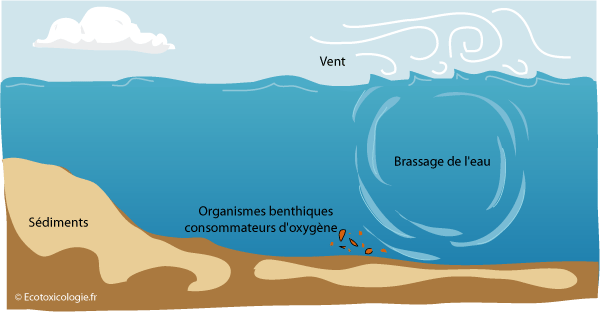
Without brine – © Ecotoxicologie.fr
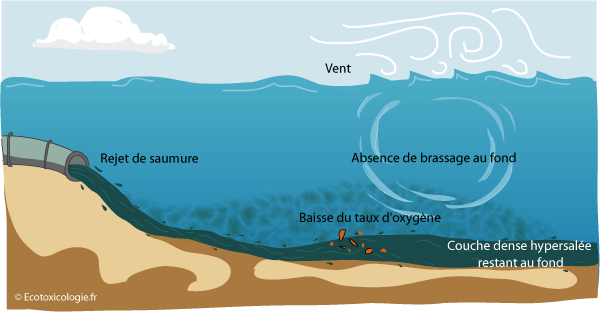
With brine reject – © Ecotoxicologie.fr
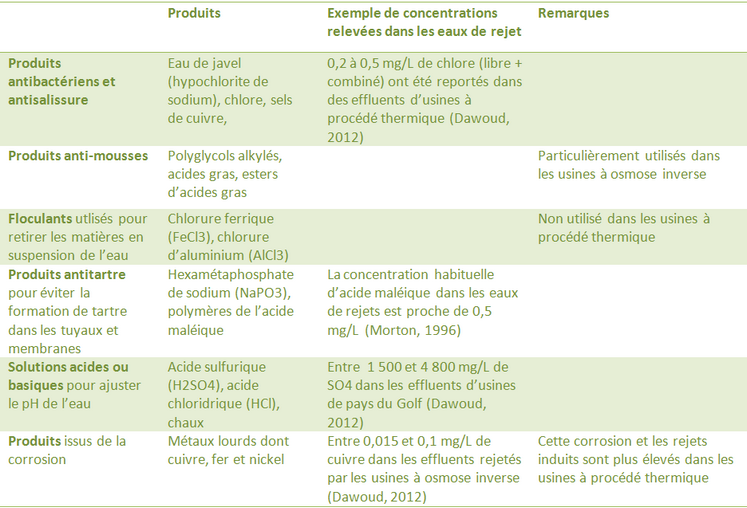
Products found partially in wastewater from dessalement plants – Morton, 1996 et UNEP, 2003 © Ecotoxicologie.fr
Ratio to remember For 1 cubic meter of potable water = 1.5 cubic meter of Brine
The reject of chemical products used along the process of reverse osmosis dessalement are to be found in the brine and water rejected by these plants such as:

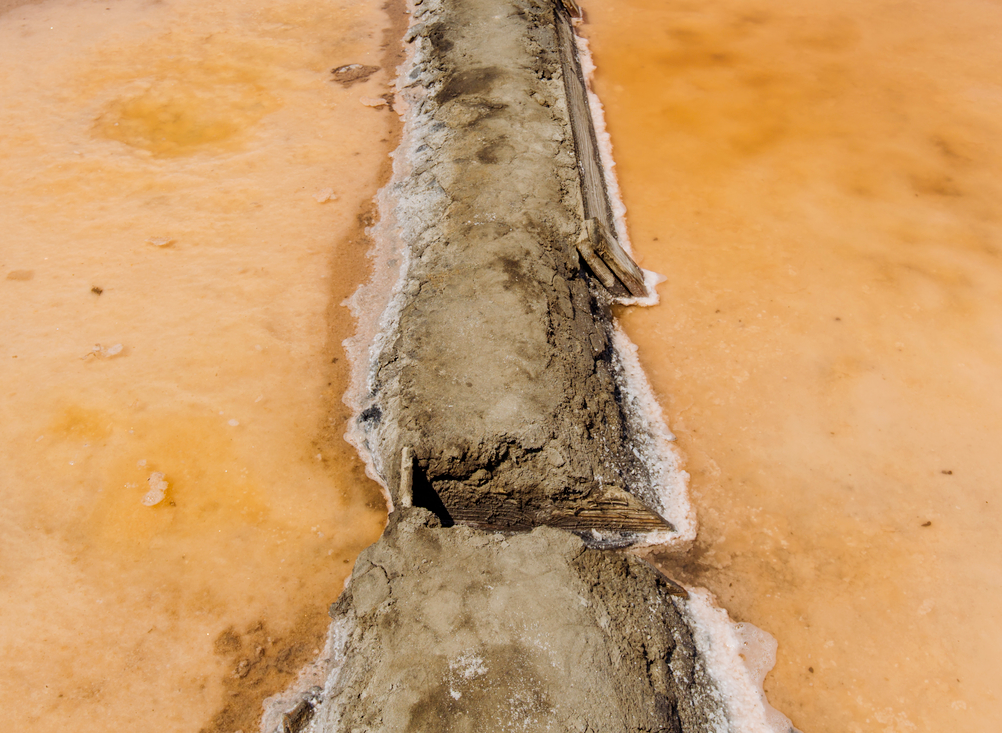
REVERSE OSMOSIS DESALINATION: WHAT IMPACT ON THE ENVIRONMENT?
Desalination, yes, but not at any price… Current reverse osmosis technology impacts the environment in a number of ways, not to mention its energy costs. As narrowed down by Fouad Amraoui, a researcher at Hassan 2 University in Morocco.
Currently, a third of the world’s population is experiencing water stress, and this proportion is set to rise to 2/3 in a few years’ time – so tomorrow! Water, an essential resource, is increasingly coveted, which is why alternative solutions are urgently needed. One such solution is seawater desalination, which is becoming increasingly widespread in the Gulf and Maghreb countries, as illustrated by the proliferation of dedicated plants. This is particularly true of Morocco, which has set up an action plan to install dozens of plants …. What are the drawbacks? Reverse osmosis desalination, the main technology used, is far from neutral for the environment.
An agreement should be reached , stipulating discharge limits for a number of elements (salts, chlorine, temperature, etc.) and the obligation to carry out an impact study (a file examining the environmental consequences of a project) prior to plant construction.
To the newspaper Médias 24 and hydrology researcher Fouad Amraoui of Morocco’s Hassan 2 University and President of the Association de Recherche Action pour le Développement Durable, discharges from water desalination plants have negative impacts on their environment. These include destruction of the seabed, reduction in plankton biomass and marine biodiversity, increased salinity and heavy metal levels, and threatens the growth, reproduction and survival of macrophytes. The researcher cites a number of negative impacts of wastewater discharge on the marine ecosystem. According to studies for every liter of fresh water produced, 1.5 liters of chemical-laden “brine” are discharged into the environment. High temperatures and high salt concentrations also have a negative effect. Ultimately, water agitation also modifies the local environment, reducing the passage of light and thus the presence of oxygen. This has a direct impact on the condition of corals, fish populations and those living on the ocean floor.
Reverse osmosis technology has an undeniable energy cost. Its emissions of Co2, sulfur and nitrogen oxides, as well as solid particles, run counter to all the challenges of global warming and carbon footprint regulation. Hence the need to adjust the ratio between fresh water and energy. On the one hand, by developing renewable energy alternatives, and on the other, by introducing cutting-edge, disruptive technologies such as cryo-separation.
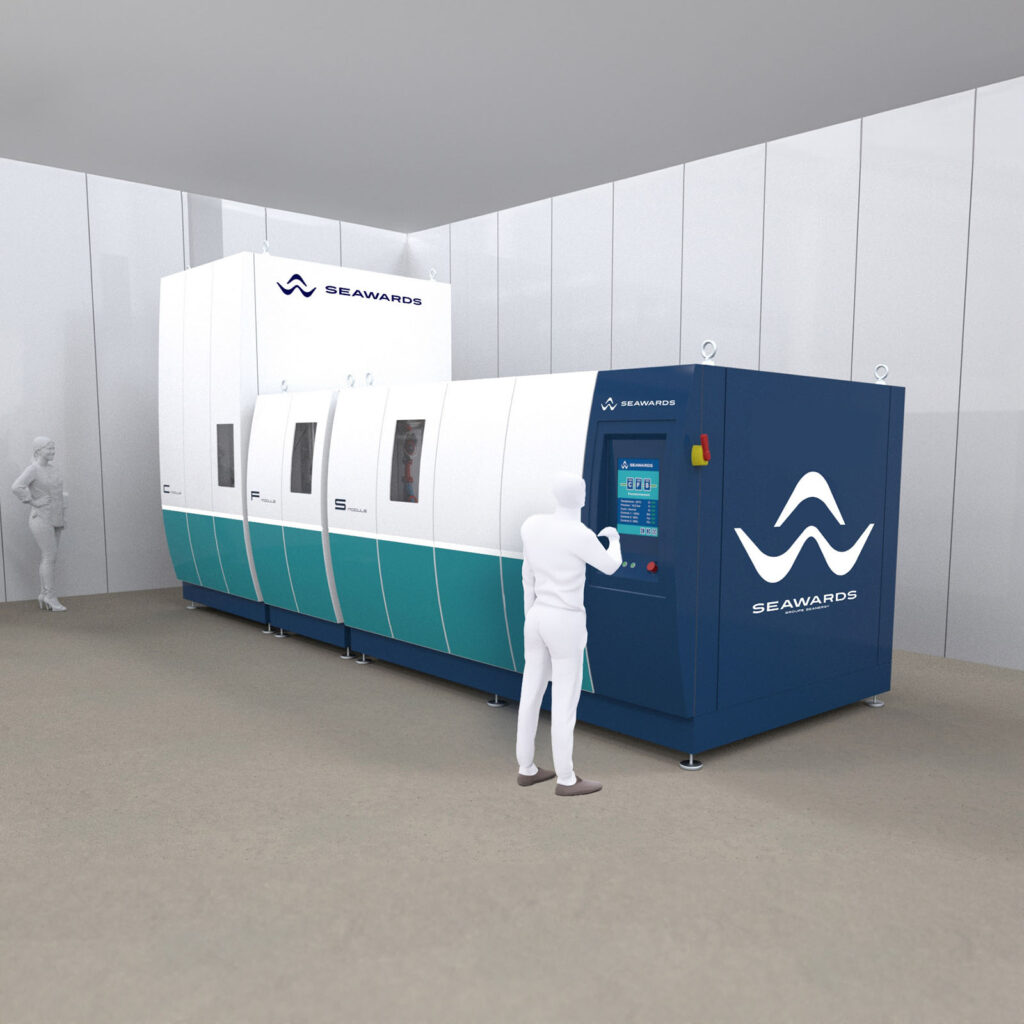
This project has been funded by the Government as part of France 2030, operated by ADEME

Jusqu’au 24 décembre, découvrez en vidéo les visages, les sourires et l’énergie de ceux qui font battre le cœur de Seawards !